The Bielefelder Chicken is a new poultry breed that has quickly become popular among chicken enthusiasts. They are gentle jumbo chickens, have friendly dispositions, and have a striking, unique appearance. They are hardy in cold weather and tolerate heat as well. Bielefelders are great birds for meat and eggs, thus gaining a nickname of the ‘uber chicken.’
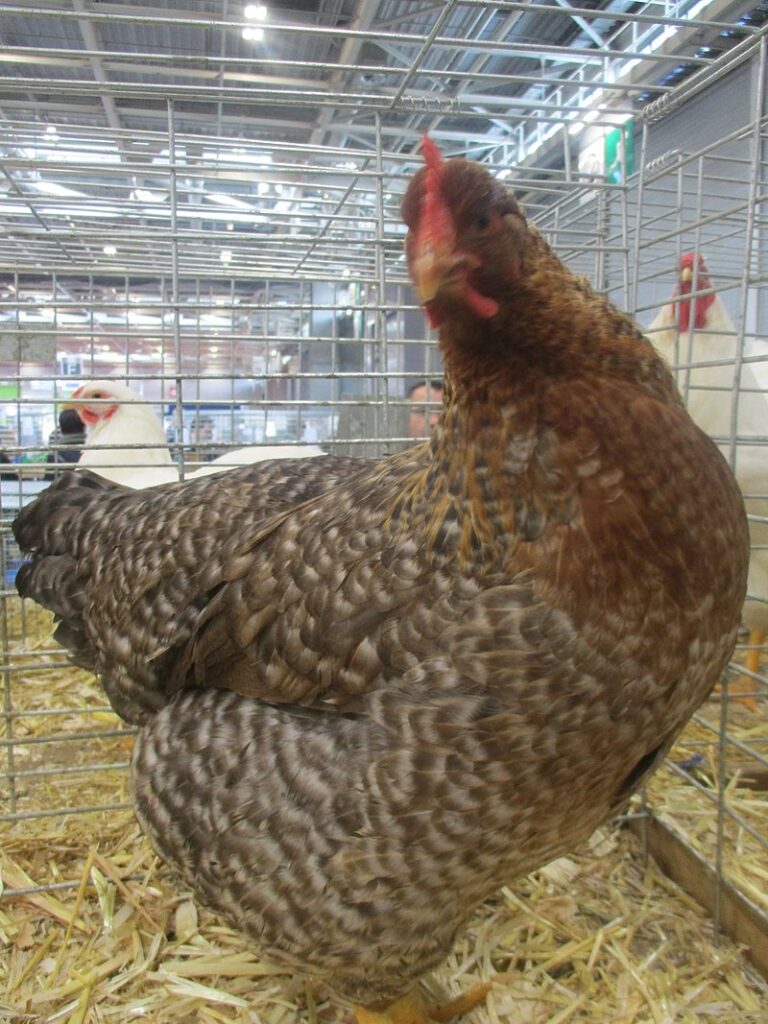
They are robust birds with large, round bodies that dwarf Orpingtons. Males easily weigh 10 pounds, and hens aren’t much smaller.
Suppose you’re a hobby farmer or backyard chicken keeper looking for a unique breed of chicken. In that case, the Bielefelder chicken might be the right fit for you. There’s more to these beautiful birds than meets the eye. Let’s take a closer look at this stunning and versatile breed and learn all we can about them.
The History of The Bielefelder Chicken Breed
Bielefelder chickens are a recent development, first bred in Germany in the early 1970s by Gerd Roth by crossbreeding existing pure breeds. The Cuckoo Malines and Welsumer stock were crossbred with American Barred Rock chickens. Rhode Island Reds, New Hampshires, and other breeds were also used to improve upon this breed’s qualities.
The name “Bielefelder” is derived from the city they were created—Bielefeld, Germany. These chickens were specifically bred to produce large brown eggs.
Being a new breed to the world and even newer to the U.S., we don’t see them as a recognized breed at the American Poultry Association just yet.
How do you pronounce bielefelder?
Bielefelder chicken pronunciation: BEE-LAY-FELDER or BEE – LUH – FELT – ER
Sources:
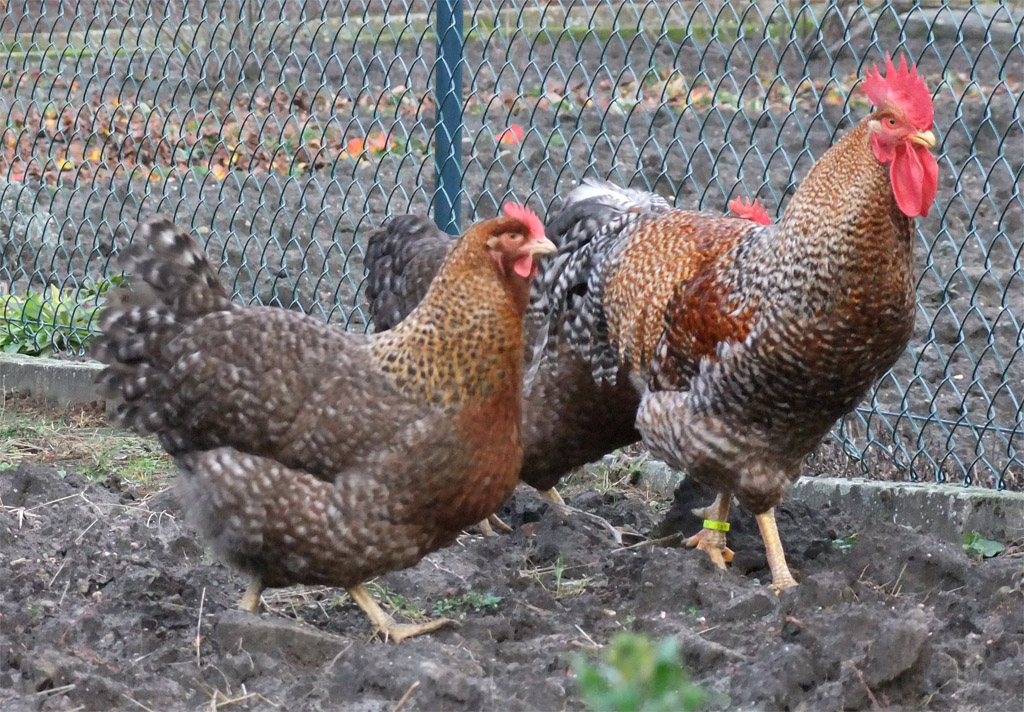
What Are Auto-Sexing Chickens
Auto-sexing breeds are purebred chicken that gives male and female chicks a different color or pattern noticeable at hatch.
Bielefelders, have Barred Rocks parentage, and chicks of different sexes can be distinguished by their color.
Another good example is the Cream Legbar autosexing breed. These chicks can be recognized upon hatching by the light spot on the top of the male chicks head. The female Cream Legbars don’t have this spot.
This can be helpful if you want to know the gender of your chicks right away.
While auto sexed chickens can be more expensive to purchase, the cost is outweighed by knowing you are getting only what you want from your chicken, such as eggs or meat.
Bielefelder Chicken Breed Appearance
The Bielefelder was initially bred in one color only, crele. This is a cuckoo pattern with black-breasted red coloring, sometimes called a cuckoo red partridge coloration.
The Silver Bielefelder variety was later developed; it shows the same pattern as in the crele variety, without any red or yellow coloring. It is a beautiful and unique new color, not seen previously in another chicken breed.
Their legs are without feathering. Both legs and skin are yellow colored. They have a single comb, ‘horn’ colored beaks, and red earlobes.
These are considered large to jumbo-size breeds. Males reach a mature weight of approx 12 pounds, and females mature weight is approximately 10 pounds. Both the hens and roosters reach maturity at 22 weeks, which is typical for a large bird.
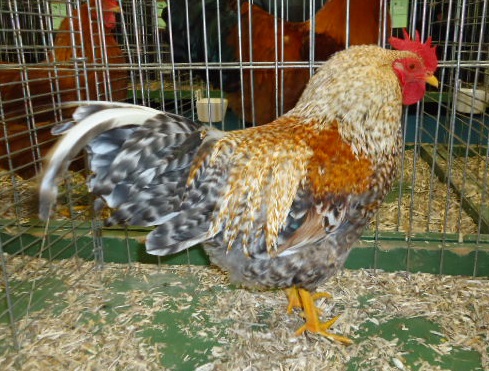
What do Baby Bielefelder Chicks Look Like?
Female baby chicks have a ‘chipmunk’ style stripe on their backs with darker down coloring. Male baby chicks have a white spot or yellow spot on their head, and their down color is lighter than the male chick. These colors and markings are evident within one day of hatching.
Are the Bielefelder Chickens Friendly Birds?
There’s no denying that Bielefelder chickens are stunningly gorgeous birds with lots of personality.
Not only do Bielefelder chickens look impressive, but they also make excellent companions due to their friendly, calm demeanor. These birds enjoy human interaction and will happily follow you around your yard or coop without hesitation.
Owners of these chickens have said it’s more like having a pet dog with the way they come running when they see you (even without tempting treats!)
You honestly can’t beat a Bielefelder chicken temperament.
A mixed flock of hens would do best with other breeds that are friendly and calm, like the Welsummer, Cochin, Brahma, and Orpingtons.
Is The Bielefelder Rooster Aggressive?
The Bielefelder Rooster is a gentle giant. Although he is a big bird, he is extremely docile and good-natured.
He is not an aggressive rooster and gets along well with other chickens.
Bielefelder Roosters are great ‘team players,’ calling to his girls when he finds food while foraging.
However, as with any animal, there is always the potential for aggression if the bird feels threatened by a predator. Although the size of these king-size Bielefelder roosters is quite a deterrent for many predators.
Caution to have only one rooster for every 12 hens and also to be sure your rooster isn’t outsizing your hens; this could be dangerous while mating.

Are Bielefelder Chickens Noisy?
Hens will make the usual egg-laying clucking; aside from that time, don’t make much, if any, noticeable noise. When they’re in any distress, like a coop squabble or threat of a predator, they are just as loud as any other birds.
However, you wouldn’t know they were around for most of their days and nights except for their significant presence. Their chatter is minimal and pretty low in volume.
Bielefelder Chicken Eggs; About The Bielefelder Hens
You don’t often see the Bielefelder on the list of top egg layers, mainly because they’re so new to the U.S. However, they are up there with the big kids. They should be. Many of the top egg layers are among the parents of the Bielfelder chicken breeds lines.
The Barred Plymouth Rocks, Australorps, Single Comb Rhode Island Reds, New Hampshires, Welsummers, and Orpingtons are other breeds on our top egg layer list. Of course, our favorite white egg layer (large and often extra large) is the Leghorn hen.

What size and color are Bielefelder Eggs?
Bielfelder hen lays large brown eggs. Some hens lay egg color that is a darker brown. There are chicken owners who claim they lay the largest brown eggs they’ve ever seen, but truthfully, they are large – extra large and not jumbo eggs.
How many eggs do Bielefelders Hens Lay?
These birds lay about 230 to as many as 280 eggs a year. Depending on the parent breeds, some Biefelders lay more eggs than others. This is roughly 4-5 large brown eggs a week.
You can expect your hen to start laying around 22 weeks of age (5 1/2 months).
If your hen stops laying eggs, it could be for many reasons. You can read more about why hens stop laying in this article here.
do bielefelder hens go broody
Bielefelder hens are not known for being broody, but it is possible. While they do not usually go broody, they take great care of the hatch chicks. A Bielefelder is primarily used for egg production rather than hatching. However, a Bielefelder hen occasionally becomes broody and stops laying eggs.
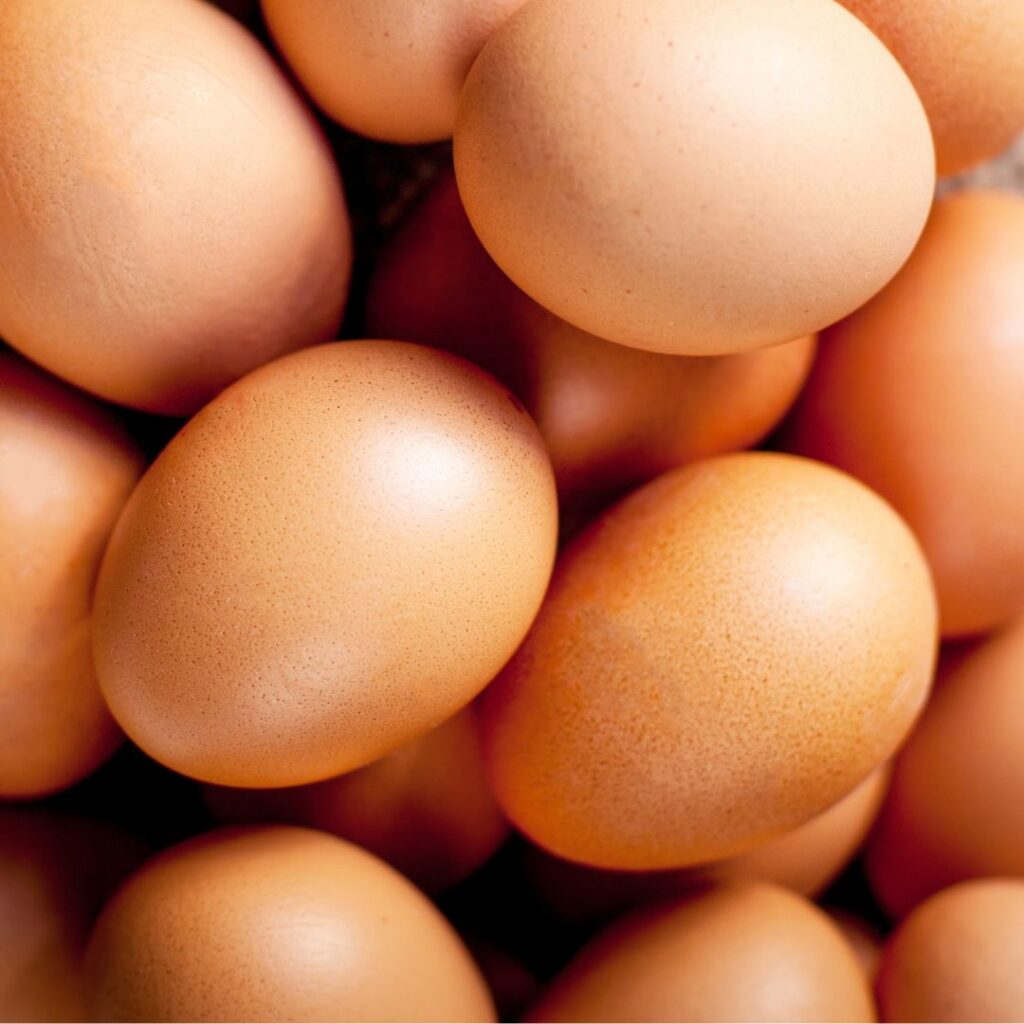
Are They Dual-Purpose Birds?
The Bielefelder chickens are intended to be a dual-purpose breed of chicken. Their size competes nicely with some of the best birds (cornish chickens) for their meat qualities.
The Chicken Coop And Run For Bielefelder Chickens
The Bielfelder chickens are cold hardy thanks to their New England roots from the Plymouth Barred Rocks, Rhode Island Red chickens, and the New Hampshire chicken breeds in their lines. Their space needs are pretty similar to the Jersey Giant chicken breed.
Space – Indoor space for your coop, aka the hen house, needs to be roomy to accommodate these large birds. Allow 8 square feet for each bird in your flock of ‘indoor space.’
Roosts – Think of these as your chickens’ beds. They need a place to roost and rest or sleep. 18″ length of roost space for each bird should be installed. Longer lengths are great to allow your birds to huddle together and keep warm in the winter.
Keep these approximately 18″ – 24″ above the floor. They are big birds, and jumping too far can damage their legs.
Nesting boxes – Occasionally, you’ll have a broody hen; although this breed of chicken isn’t known for its broodiness, it happens. Nesting boxes are a safe place to set on and hatch their eggs. Read about broody hens here.
Other than that, nesting boxes are needed for the routine ‘drop off’ of egg laying. Allow for 1 nesting box for each of your Bielefelder chickens. Nesting boxes should be 16-18″ square with 6-8″ depth lined with plenty of bedding to keep those brown eggs from getting damaged.
Feeders and Waterers – Be sure to keep water and feed fresh daily. Winter waterers may need to be changed a few times a day if they freeze, or you could invest in a heated waterer (this would require a secure and safe electricity source). In the summer, add ice cubes to your water to help keep it cool and fresh throughout the summer heat.
You can find out more about winter coop preparation and chicken care in this article.

The Chicken Run; Outdoor space needs
Large birds need large spaces. This beautiful bird is hands down a jumbo breed of chicken and requires a minimum of 10 square feet of space. Although, we strongly recommend that you try 15 square feet per chicken.
Ten square feet will be o.k. if you allow them to free range a little while each day or week. The more exercise and exploring your flock has, the better for their mental and physical health.
Protection from the Elements – Your run should have a space under cover to protect it from rain and snow and provide shade from the sun in hot weather. A shaded area can be several degrees lower in the summer’s heat.
Perches – Along with ground space, your flock will appreciate having some perches for lateral movement. These perches not only cuts down on boredom; they allow your birds to see more from varying heights, find some ‘alone’ time and exercise their bodies by moving about more.
Fencing height – 6 feet is the minimum height for fencing. The purpose here is to keep your chickens safely contained and keep predators from invading their space.
Overhead fencing-type materials like hardware cloth are recommended to keep hawks and other overhead predators from making an unwanted visit. Although, with a chicken breed this size, hawks seldom attempt anything that brave.
Dust Bath – Like any other chicken breeds, every chicken flock needs a dust bath to stay healthy and maintain its beautiful feathers. A dust bath will help rid themselves of lice and mites and keep those feathers shiny and healthy.
Frostbite – The combs on your chickens can be susceptible to frostbite in cold weather. Take steps to prevent this by having a well-sealed coop, with proper ventilation. Also, add a dab of petroleum jelly to their combs and wattles to prevent frostbite.
Free-Range and Foraging
The Bielefelder chickens are excellent at foraging and can quickly call back when you want them to come in from their free range. Their size alone will help their appetite to help you with critter control like ticks, grubs, and other garden bugs. They’ll also eat worms and forage on fruits and veggies (so you may want to fence your garden in).
Larger predators like fox, coyote, and of course, bear are still a threat, but hawks seldom dare try to aim for a Bielefelder chicken. The neighborhood dog will think twice before investigating this chicken breed of almost 10 pounds.
It’s best to allow a flock to free range when chicken owners are nearby to hear them squawk an alarm of trouble.
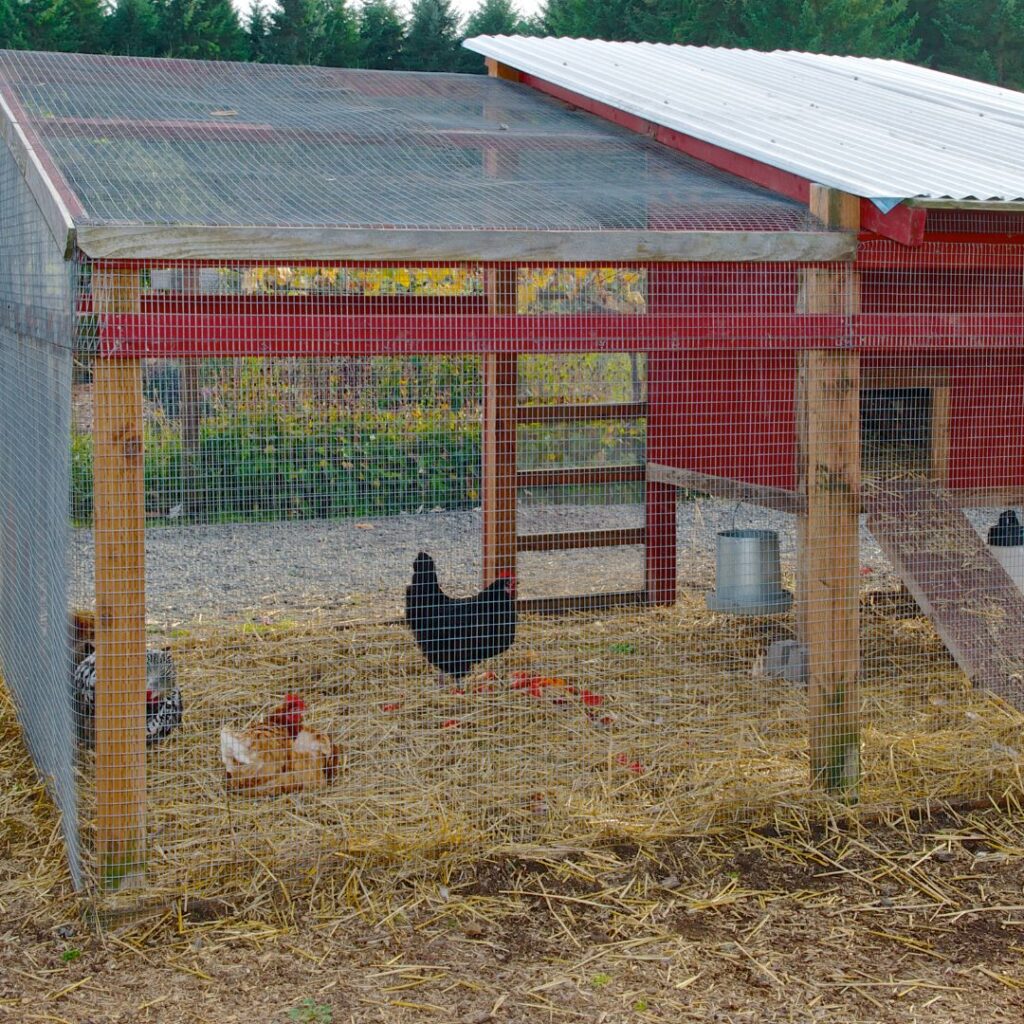
Are The Bielefelder Chickens O.K. For An Urban Homestead (City Chickens)?
Along with their jumbo bodies, huge eggs, and ability to be used as a meat birds, these chicken breeds make an excellent choice for Urban chickens.
These beautiful birds handle confinement pretty well as long as you provide an oversized outdoor run area. The Bielefelder chickens are known for being quiet and calm birds.
Aside from their large presence, neighbors wouldn’t even know they were in the neighborhood until they lay eggs for those few moments each day.
barnevelder vs bielefelder
The Bielefelder, not to be mistaken with the Barnevelder aka the Barnie. The Barnevelder is a Dutch chicken breed. The Bielefelder is a German breed of chicken. It is an auto-sexing, dual-purpose breed intended for eggs and meat.
Life Expectancy of the Bielefelder Chicken Breeds
This is a new chicken breed to the world, so the ‘average’ is assumed it’s the same as their parent’s lines. The average age for this breed of chicken is seven years. Some will live longer, to about ten years.
However, you should anticipate that the egg laying will peak around three years of age and slowly decline for the following 2-3 years until hens stop laying eggs altogether.
Is The Bielefelder Right For Backyard Chicken Keepers and Hobby Farmers?
Thanks to german engineering and their desire to develop this ‘uber’ breed for its all-around best qualities, this breed of chicken is ideal for beginner chicken keepers, a small hobby poultry farmer, and the urban homestead.
Whether you are looking for a regular supply of fresh eggs or a bird for meat, these beautiful chickens offer it all.
A flock of Bielefelder chickens not only make great providers, but they also make great companions and excellent pets for children. They are hardy enough for the harsh weather that many parts of the U.S. have. German people certainly knew what they were doing when they developed this breed of chicken.
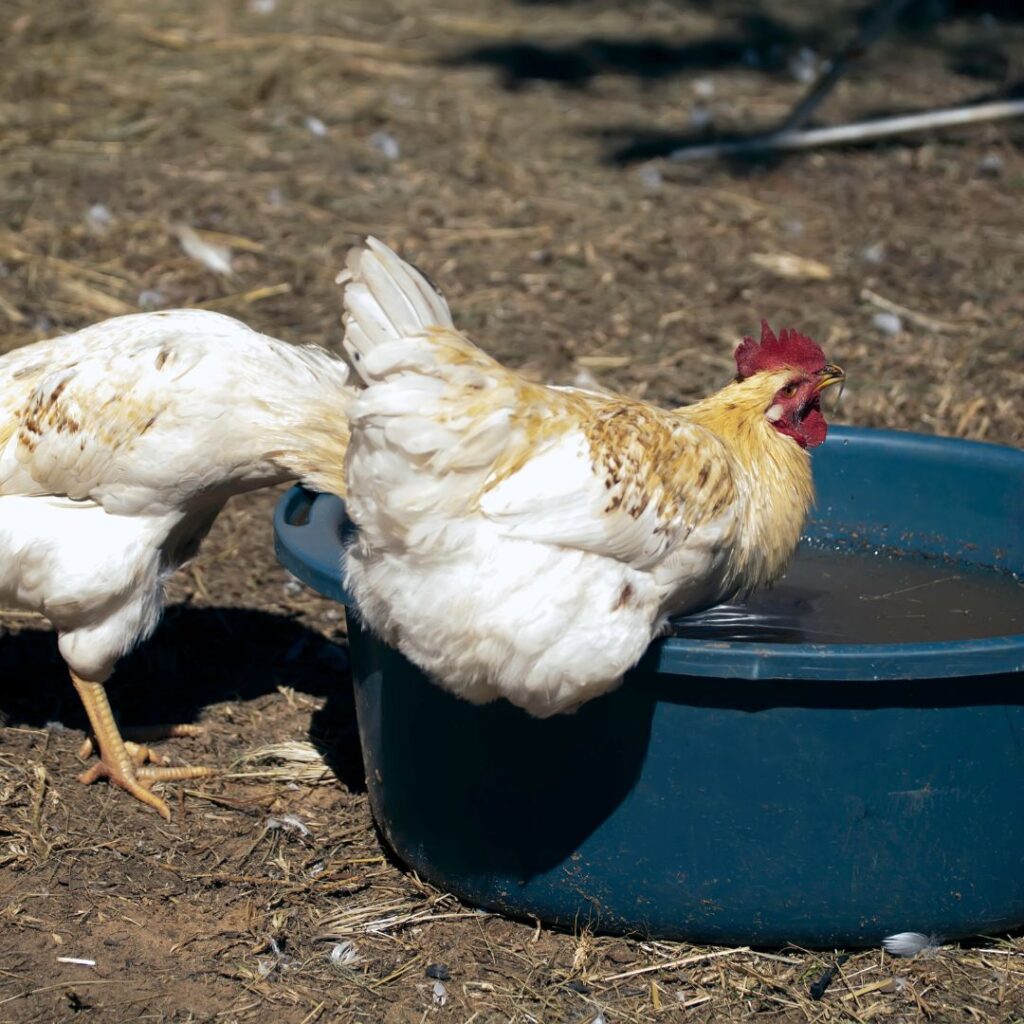


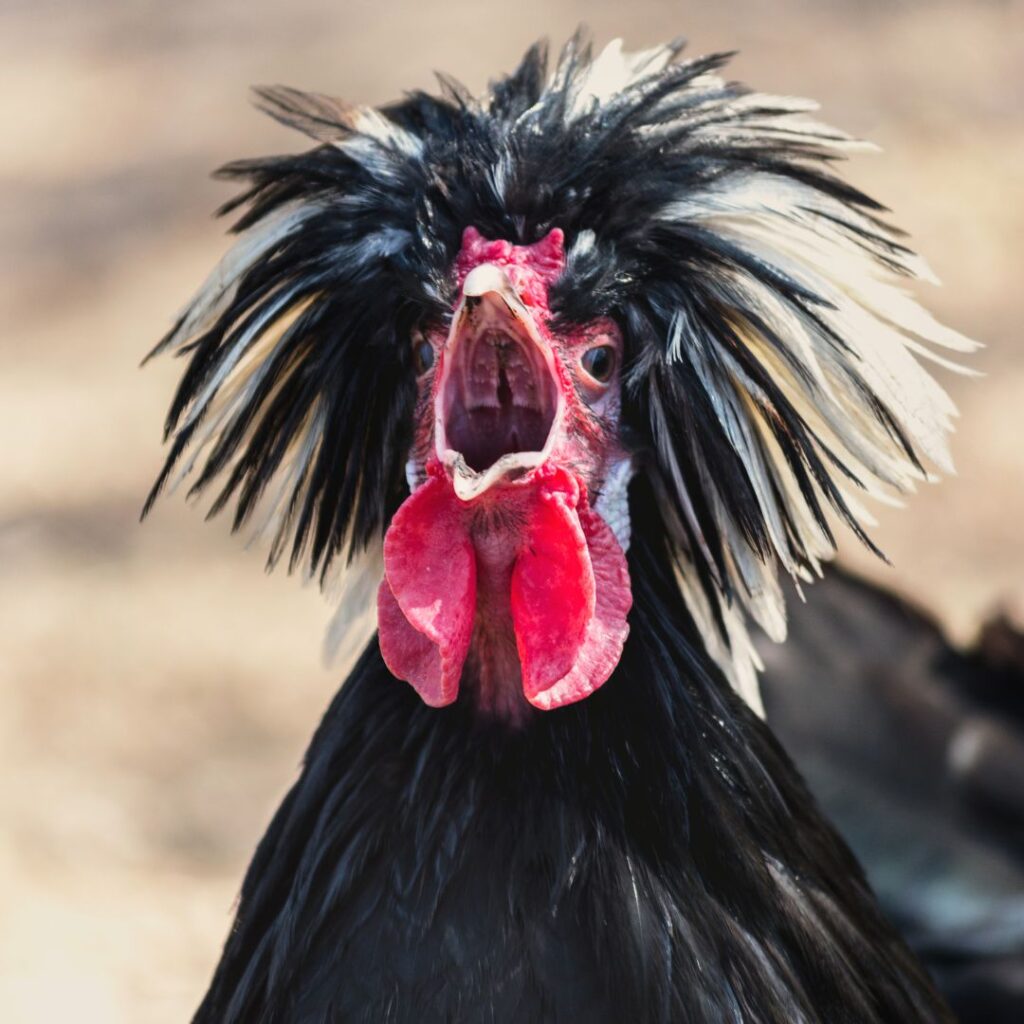
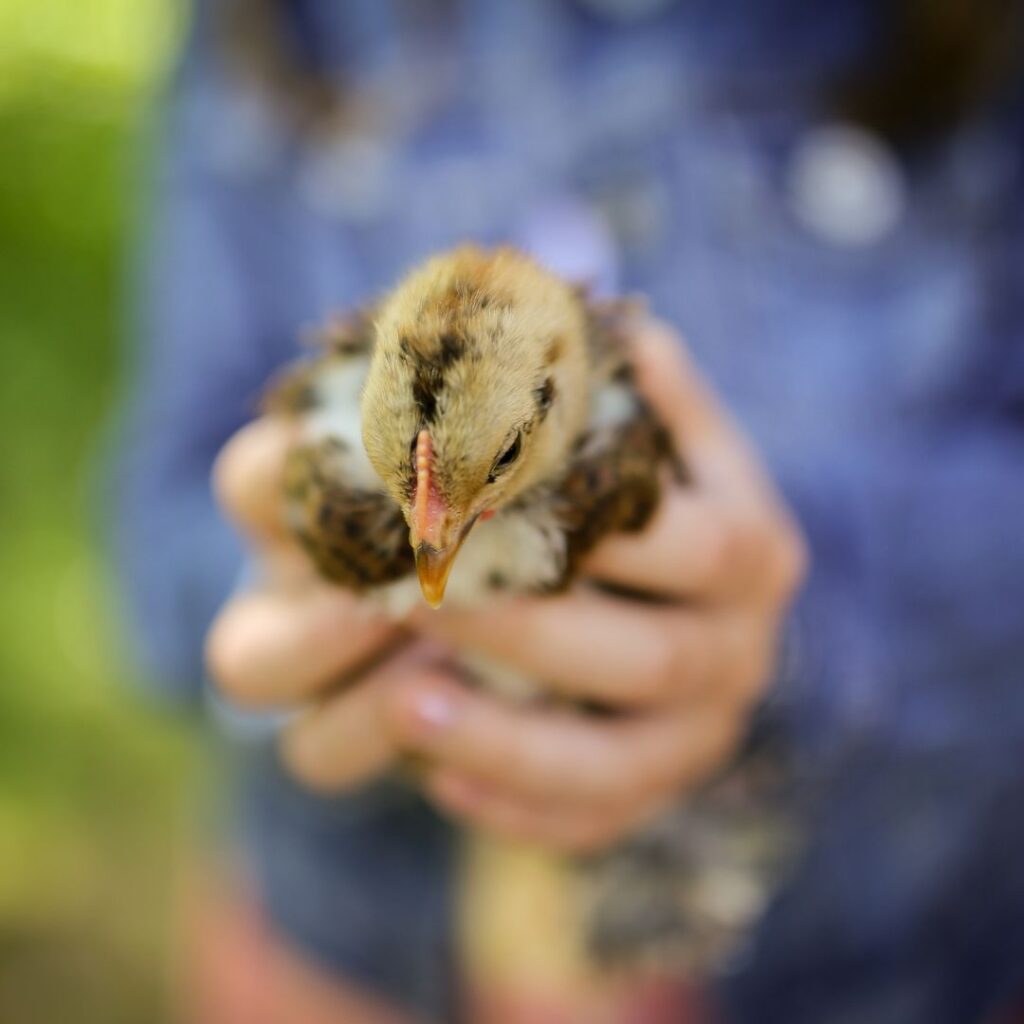
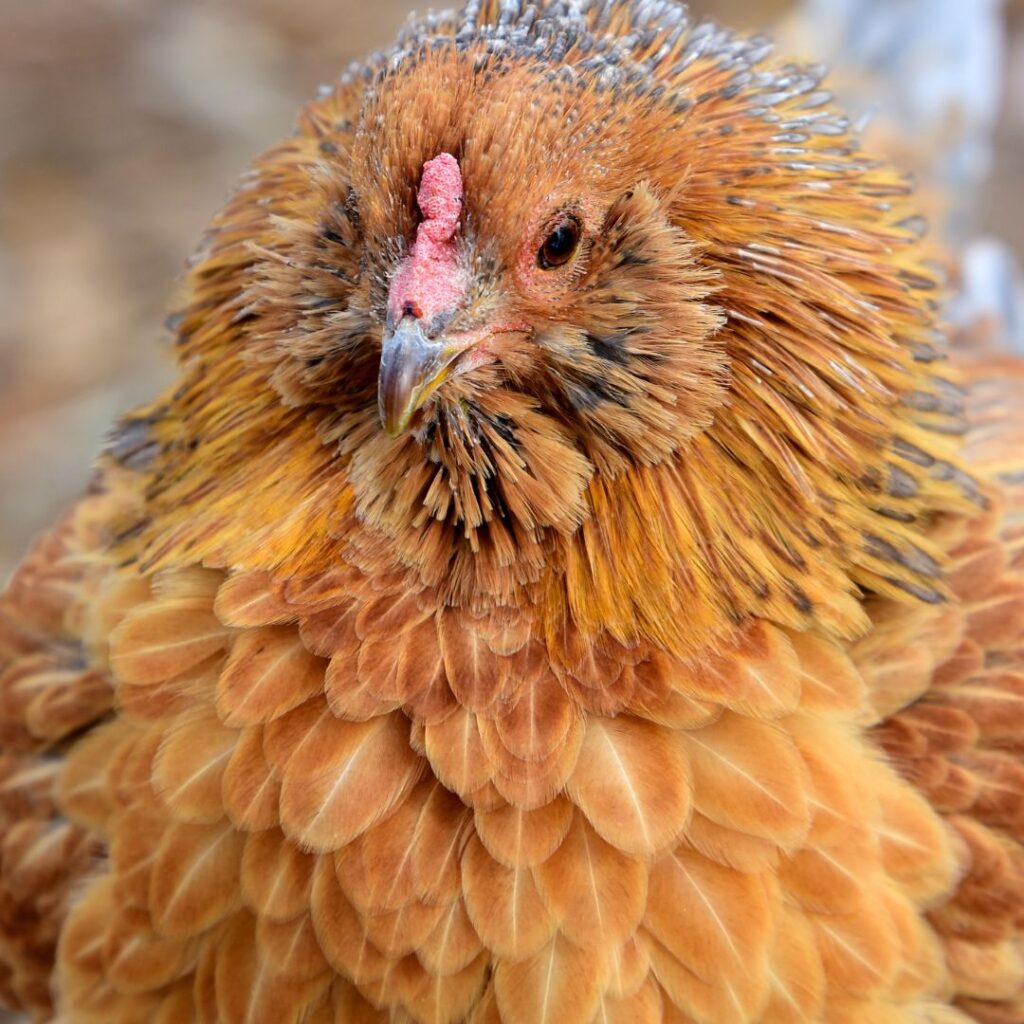
Pingback: 11+ Quiet Chicken Breeds That Make Great Neighbors In Urban Areas